|
|
 |
 |
 |
 |
 |
|
 |
|
|
Define Fine Green Jade
Green jadeite is also known as fei tsui. The criteria we employ for its appreciation are: color, clarity, cutting, flaws and transparency. Because of the nature of jadeite, unless the piece in question is small, quality is seldom uniform throughout the piece. Therefore, we have to assess the quality of salient parts of the piece and then look at the relationship of those parts to the whole piece.
Color
Color is of paramount importance. We examine the green Burmese Jadeite according to its:
|
|
|
|
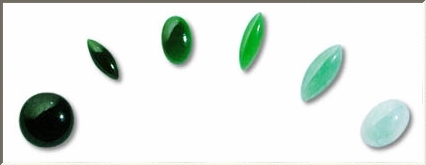 |
|
|
|
Varying degrees of color intensity from the left, the most saturated to the right the less.
Purity:
The most desirable is emerald green; in descending order of desirability are green tinted with yellow, blue and gray.
Intensity:
The more saturated the green the better. However, an overdone intensity is of only middling quality.
Vividness:
The color should be vibrant and lively. The presence of gray and black makes the green dull without altering its tint.
Evenness:
The more even the color, the more desirable the jade.
|
|
|
 |
 |
 |
|
 |
 |
 |
 |
 |
 |
 |
 |
|
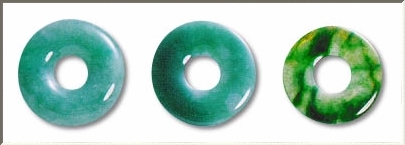 |
|
|
|
Vivid against dull color of Jadeite.
Transparency:
The range is from opaque to transparent, with the latter being the rarest and therefore most sought after.
|
|
|
|
 |
|
|
|
Transparency of Jadeite Jade.
Clarity:
Jadeite, like other minerals, usually contains inclusions in the form of veins and spots. In general, white inclusions are less distracting than black ones and, of course, the less visible the inclusion the better.
|
|
|
|
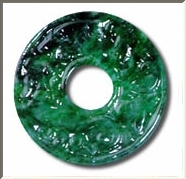 |
|
|
|
Black inclusions affect the value of jade. >>>
Cutting:
Jadeite is usually worked into two categories: plain polished shapes such as cabochon and carved designs. Plain polished shapes require higher grade material without flaws. Ratings are made on their proportion and symmetry. For example, a well-cut cabochon should be neither too thick nor too thin in relation to the area of its top surface. It's "bulge" should be centered, prominent but not exaggerated.
Carved designs are often used to eliminate or minimize the effect of flaws and cracks. They are assessed on their aesthetics and the workmanship of the details.
|
|
|
|
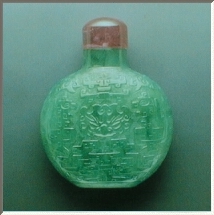 |
|
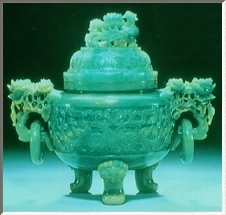 |
|
|
The artistic carving produced on this piece of jade increases its value.
Flaws:
Tiny flaw lines, though certainly a value-detractor, need not be objectionable. A flaw that cuts through from one side to the other can be a serious fault. Use a strong flashlight to examine cracks and flaws.
One can readily see that the criteria do not form a system of valuation. They are the bases for the "aesthetics of green Jadeite", and as such they facilitate an educated assessment of green jade. It is difficult to see how one could come up with an empirical valuation system. Perhaps that is what make jade so fascinating!
|
|
|
 |
|
 |
 |
 |
|
Copyright©1997 - 2020 Jade Gift.Com. All rights reserved.
|
|
|